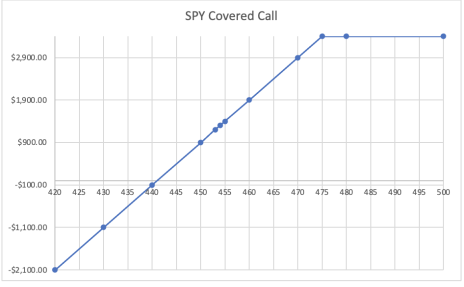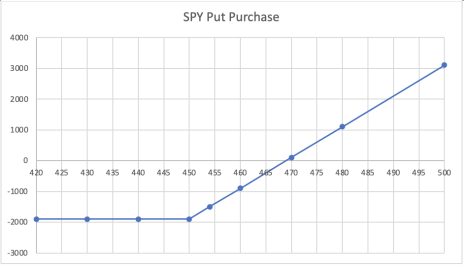by Jacob Mintz, Chief Analyst, Cabot Options Trader, Cabot Options Trader Pro, and Cabot Profit Booster
How Options Work
The first—and perhaps biggest—challenge of options trading is understanding what an option is.
There are numerous types of options trades. Depending on which method you choose, options trading can be used to hedge a portfolio (more on this later), create yield or gain significant market exposure and returns with little capital risk.
Options contracts represent 100 shares of the underlying stock. So, if you exercise a call, you buy 100 shares of the underlying stock; if you exercise a put, you sell 100 shares of the underlying stock at a stated price—known as the “strike price.”
Here are a few basic terms that will help you better understand options trading:
[text_ad]
Call Option
A call option gives the buyer the right to buy 100 shares at a fixed price (strike price) before a specified date (expiration date). Likewise, the seller (writer) of a call option is obligated to sell the stock at the strike price if the option is exercised.
Put Option
A put option gives the buyer the right to sell 100 shares at a fixed price (strike price) before a specified date (expiration date). Likewise, the seller (writer) of a put option is obligated to purchase the stock at the strike price if exercised.
Strike (or Exercise) Price
The strike price is the price per share at which the holder can purchase (for call options) or sell (for put options) the underlying stock.
Exercise
Exercise is the process by which an option buyer (holder/owner) invokes the terms of the option contract. When exercising, call owners will buy the underlying stock, while put owners will sell the underlying stock under the terms set by the option contract. All option contracts that are in-themoney (i.e., have at least one cent of intrinsic value) at expiration will be automatically exercised.
Expiration Date
The expiration date is the last day on which the option may be exercised. Monthly listed stock options cease trading on the third Friday of each month and expire the next day. Weekly options cease trading on Friday of that week.
Hedging
Hedging is a conservative strategy used to reduce investment risk by implementing a transaction that offsets an existing position.
Covered Call
A covered call is another risk-reducing strategy; in this, a call option is written (sold) against an existing stock position on a share-for-share basis. The call is said to be “covered” by the underlying stock, which could be delivered if the call option is exercised.
Intrinsic Value
The price of an option is made up of two parts, the intrinsic value and the time value. The intrinsic value of an option is the amount of profit that can be theoretically obtained if the option is exercised at that moment and the stock is either purchased (for calls) or sold (for puts) at the current market price.
If an option has positive intrinsic value, it is said to be “in-the-money” and if it has negative intrinsic value it is said to be “out-of-the-money.” For instance, an XYZ May 25 Call priced at $3.00 when the stock is trading at 26.50 would have $1.50 of intrinsic value if the stock were trading at 26.50, regardless of its market price at the time.
Time Value
Time value is the amount by which an option’s market price exceeds its intrinsic value. In the case above with the XYZ May 25 Call priced at $3.00 while XYZ stock is trading at 26.50, the intrinsic value is $1.50 and the rest is time value, in this case, the remaining $1.50 is time value. If an option is out-of-the-money (i.e., has no intrinsic value) then the entire market price is considered time value or time premium.
Premium
The price of an option is called its premium. Prices are quoted per share, but premium is usually the entire dollar value of the contract (price per share X 100 shares = total premium).
Time Decay
Because options have an expiration date, the time value gradually erodes all options are wasting assets whose time value erodes to zero by expiration. This erosion is known as time decay. The closer an option is to expiring, the greater the erosion in value. Time value varies with the square root of time, so that as an option approaches its expiration date, the rate of time decay increases.
Long
To be “long” an option simply means to have purchased it in an opening transaction and thus to own or hold it in a stock or an option.
Short
Being short has two meanings. If a trader is short a stock, it means he has sold shares he does not own. To be short an option simply means to have sold the option and collected the premium in an opening transaction. (A short position is carried as a negative on a statement and must be purchased later to close out.)
LEAPS (Long-term Equity AnticiPation Securities)
These are long-term options with expiration dates as far out as three years, usually expiring in January.
Those are a few of the basic terms to help you grasp the “how” and the “what” of options trading. Now I want to tell you a little bit about “why” you should trade options … by dispelling some of the biggest misconceptions about options trading.
Five Options Trading Myths Exposed
Too many investors think of options trading as gambling, or an exotic derivative that only Harvard and M.I.T. mathematicians can understand. That could not be farther from the truth. I truly believe that any investor who’s willing to commit to learning from an experienced trader will soon find that trading options is not gambling.
Some of the savviest, most seasoned investors are still clueless when it comes to options trading. Others know the basics of options, but are skeptical about the perceived risks that accompany it. Sadly, that skepticism is rooted in a fundamental misunderstanding of how options work.
That misunderstanding precipitates bad information, and that bad information has been repeated so often among options detractors that at a certain point, it became myth.
It’s time to identify those myths … and expose them.
Myth 1: Options trading is too risky.
If you don’t know what you’re doing, this is true. But with a little education on the subject (some of which you’ll get later in this report), options trading can be as safe as you want it to be. When done right, the whole point of options is to reduce risk. Options are all about probabilities, which enable you to choose your level of risk in a given trade.
For example, if you want to play it safe and hit “singles”—i.e., go for modest returns that eventually add up if you string enough of them together—you can choose a trade that has an 80% probability of success. If you’re willing to take on more risk by going for home runs even if it increases the chance that you’ll swing and miss, you can reduce your probability of success in exchange for a much bigger payoff.
So really, the notion that options trading is risky is only part myth. Options trading can be risky … but only for the uninitiated. Which brings me to myth No. 2...
Myth 2: Options trading is too confusing.
It’s true that trading options is more complex than buying and selling stocks. Options comes with its own vernacular—covered calls, selling puts, the strike price, iron condors, etc.—that requires some getting used to. But it’s not like learning how to split the atom. Like most things, options can be learned fairly easily if you’re willing to put in just a little bit of time.
Once learned, the options-trading process will quickly become second nature. You don’t have to be a professional or seasoned investor to trade options. There are plenty of self-directed investors who picked it up and now trade options regularly. You can too.
Myth 3: You need a lot of money to trade options.
Not really. You only need $2,000 to open a margin account. For most trades, you don’t need more than $1,000 in capital. If you have $10,000 to devote to options in your brokerage account, you should plan on allocating between 2% and 5% to each trade. Assuming you don’t lose most of those trades—and if you use probabilities correctly, you shouldn’t—that’s a lot of bang for your buck.
By not risking too much on any one trade, you can get more mileage—and hopefully more profits—with your options money than you would if you invested that money in stocks.
Myth 4: Options require a bull market.
Not necessarily. Through the magic of puts, you can still profit even when the market begins to fall.
In traditional investing, the average investor can’t outright short the market by selling stocks or indexes short. However, options traders can gain bearish exposure when you expect a decline in the price of the underlying stock or ETF by buying puts.
And the purchase of a put at a specific strike price offers unlimited potential for profits, while your maximum loss on the trade is the amount of premium you paid.
For example, the purchase of the XYZ 100 put for $1 would only risk the $1 paid. If the stock were to close at $100 or above at expiration, the put would expire worthless. If the stock were to go below $99, the holder of this put would make $100 per contract purchased per point below $99.
So by purchasing puts, you can take advantage of a down market with low-risk, high-reward trades.
Myth 5: You can only trade options on stocks you already own.
Wrong. The beauty of options trading is that you’re not limited to the stocks already in your portfolio. An option is a contract that conveys to its holder the right to buy (in the case of a call) or sell (in the case of a put) shares of the underlying security at a specified price (the strike price) on or before a given date (expiration day). After the given date, the option ceases to exist.
The Bottom Line
The advantage of trading options is that, unlike buying stocks, you can define your risk ahead of time.
Historically, the stock market rises over time. However, when you buy an individual stock, it has only a 50-50 chance of success. Options give you the opportunity to rig the odds in your favor. You can make trades that have a 60%, 70% or even 80% probability of success.
Simultaneously, options are versatile enough to also allow you to be more aggressive. You can take on more risk as a means to potentially earn a bigger return. Either way, your risks are clearly defined ahead of time in a way that’s difficult to achieve in pure stock trading.
Using Options to Hedge a Portfolio
A few Cabot Options Trader subscribers have asked me about ways to protect gains in their portfolios, so I thought I would write to everyone with a couple of strategies using options to hedge your portfolio.
Because I can’t possibly know what you have in your portfolio, I’ll base the strategies on the SPDR S&P 500 ETF (SPY), which corresponds to the price and yield performance of the S&P 500 Index.
(Note: You may not be allowed to hedge your mutual fund holdings by trading the SPY. For instance, if you own mutual fund XYZ, your broker may not allow you to sell calls in the SPY because they don’t move in exact correlation. But that is a conversation you should have with your brokerage provider.)
The SPY is trading at 454 as of this writing. For this exercise, I’m going to assume that you own 100 shares of SPY, which is currently worth $45,400.
Here are a couple of different strategies you can use to “hedge” your portfolio.
Covered Call
A covered call is a risk-reducing strategy; a call option is written (sold) against an existing stock position on a share-for-share basis. The call is said to be “covered” by the underlying stock, which could be delivered if the call option is exercised.
This is a great way to create yield in your portfolio, though I will say it does not “hedge” you entirely. If the SPY were to drop dramatically, you would collect the premium taken in, but you would still be long the stock.
So, based on this example, you own 100 shares of the SPY, and therefore you are able to sell 1 call against your stock so that you are covered.
For this theoretical exercise, I will look six months out, and 5% out of the money. Based on this criteria, you could sell 1 of the June 475 calls for $13. If the SPY stays below 475 by June expiration, you would collect $1,300. If you do that twice a year, you would collect $2,600.
You can choose any number of months or strikes. For instance, you can sell 1 June 475 calls or 1 January 500 calls (exp. 2025). There are seemingly limitless amounts of calls you can sell, in many different combinations.
This is a profit-and-loss graph of your stock and covered call position:
Put Purchase
Once again, assuming you own 100 shares of the SPY, the truest hedge would be to buy 1 put against it. If the SPY were to drop below your puts’ strike price, you could simply exercise your put, and you would be out of your entire stock position. The upside to this strategy is that you do not cap the potential profit if the SPY price continues to rise.
For instance, you could buy 1 of the June 450 puts for $15. So if the SPY were to drop below 450, you would exercise your puts, and you would be taken out of your SPY stock position. However, you have to pay $15, or $1,500, for this insurance. But with the VIX at historically low levels, this insurance is extremely cheap based on historical prices.
Again, you can choose any number of strikes and time frames for this strategy.
This is a profit and loss graph of your put purchase position:
Conclusion
You can use any of these strategies against any of your equity or index holdings. If you own a lot of Apple (AAPL) or Bank of America (BAC) stock, for instance, you can hedge your stock positions with these strategies.
If you want to hedge your mutual fund holdings, talk to your brokerage provider to see how you can implement strategies like these.
My Options Philosophy
My fundamental philosophy of options trading is to understand the risk and reward of every trade. When buying or selling options, I break down the best and worst case scenarios, and determine if the odds are in my favor, and if the trade fits my objectives.
What makes options so potentially lucrative is that you can make tremendous profits with little capital at risk. When I buy options, I risk pennies to make dollars.
When I recommend selling options, I will always do so in a way that has defined risk. This way, we’re never exposed to catastrophic risk.
In the options world, there are many ways to take advantage of opportunities. There will be times when I recommend strategies to hit singles, and other times when I will go for the home run.
If a trade I recommended is making money faster than I had anticipated, I will often recommend taking off half the trade. As the old trading saying goes, “Bulls make money, bears make money, and pigs get slaughtered.”
That said, each Cabot Options Trader subscriber has a unique mix of investment style, objectives, risk profile and assets. It is up to you to decide which trades fit your objectives and risk profile and what size positions you will take.
I hope this free report has been helpful, and perhaps educational. If you’re willing to read a 3,000-word report about options, perhaps you’re willing to take things a bit further and subscribe to my Cabot Options Trader advisory. If so, simply click here.
With a little education, options trading can be simple, low-risk, fun and most importantly, profitable.



